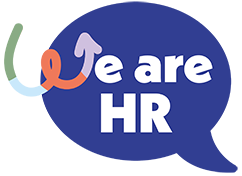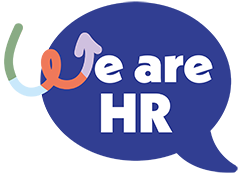Table Of Contents
The workforce in the UK, much like in other developed nations, is ageing at a rapid pace. This demographic shift brings both challenges and opportunities for employers, particularly those in sectors where age diversity is prevalent. As an employer or HR professional, understanding the implications of an ageing workforce is critical to creating a supportive environment and ensuring long-term organisational success. In this blog post, we’ll explore the key factors behind the ageing workforce and how employers can manage the challenges while harnessing the benefits.
Why is the UK Workforce Ageing?
There are two primary reasons for the ageing workforce in the UK:
- Demographic Shifts: The UK’s population is living longer, and birth rates are declining. According to the Office for National Statistics (ONS), in 2014, the median age of the UK population passed 40 for the first time in history. This trend indicates that a significant proportion of the workforce is now in their mid-40s or older, and it will continue to grow as people live longer.
- Legislative Changes: The abolition of the default retirement age in 2011 means employers can no longer force employees to retire at 65. This has led to more individuals working into their late 60s and beyond. The ONS noted that employment among people aged over 50 has outpaced other age groups, with those over 65 continuing to contribute to the workforce in growing numbers.
Key Challenges of an Ageing Workforce
1. Health and Wellbeing
While older employees may take fewer sick days compared to their younger counterparts, the length of absence due to health reasons is often longer. As employees age, they may experience physical limitations or health issues that affect their ability to perform certain tasks. Employers must consider how to create a work environment that is accommodating and inclusive for all age groups.
Employers should ensure that their workplace design and management practices cater to the physical needs of an ageing workforce. For instance, ergonomic workspaces, flexible working policies, and robust return-to-work support can help manage health-related absences and improve productivity. Moreover, investing in health benefits like virtual GP services, mental health support, and access to employee assistance programs (EAP) can enhance overall employee wellbeing.
2. Skills Gap
One major concern for employers is whether older employees possess the necessary skills to keep up with the rapid technological changes in the workplace. Gen Z, known for being digital natives, are often more familiar with new technology compared to older generations. However, this does not mean older employees cannot adapt.
According to government research, 40% of workers aged 55-64 have not engaged in any formal training or education since leaving school. To address this skills gap, employers should actively promote continuous learning and development opportunities. By providing training programs focused on upskilling and reskilling, employers can ensure that older employees stay relevant in the evolving job market.
At our organisation, we offer CIPD-accredited qualifications that are ideal for HR professionals looking to upskill or transition into the HR field. These programs cater to individuals at all stages of their careers, including those looking to enhance their skill sets later in life. Offering these qualifications can be a great way for employers to attract and retain older employees who are eager to learn and grow.
3. Retaining Talent and Institutional Knowledge
One of the most significant advantages of an ageing workforce is the wealth of experience and institutional knowledge that older employees bring to the table. Losing this knowledge due to retirement or resignation can create gaps in the workforce that are difficult to fill.
To mitigate this, businesses can implement mentorship and knowledge-sharing programs that allow older employees to pass on their expertise to younger generations. This not only fosters collaboration between different age groups but also ensures that critical knowledge is retained within the organisation. Encouraging an intergenerational exchange of skills and ideas can be a win-win for both older and younger employees.
4. Menopause Support
The menopause is an important factor for employers to consider as they manage an ageing workforce, particularly for female employees. Menopause typically begins between the ages of 45 and 55 and can have a significant impact on employees’ productivity and wellbeing. In a survey conducted by Vodafone, 62% of women reported that menopause symptoms had affected their work performance, with some even considering reducing their hours or leaving their jobs altogether.
To support employees going through menopause, employers should offer flexible working arrangements, provide access to medical support such as virtual GP services, and create a workplace culture that is open to discussing health-related challenges. By addressing menopause, employers can prevent talent loss and enhance job satisfaction for those experiencing these symptoms.
Opportunities for Employers
1. Creating an Inclusive Workplace
An ageing workforce offers an excellent opportunity for employers to demonstrate their commitment to diversity and inclusion. Age is a protected characteristic under the Equality Act 2010, and employers are legally required to make reasonable adjustments for older workers. This is an opportunity to build an inclusive environment that caters to employees of all ages, fostering a positive and supportive company culture.
2. Leveraging Experience
Older employees bring a unique perspective that younger employees may not have yet developed. Their years of experience in the industry can provide valuable insights and stability to the organisation. By tapping into this wealth of experience, businesses can make more informed decisions and strengthen their strategic direction.
3. Addressing the Leadership Gap
As the baby boomer generation retires, organisations are facing a potential leadership gap. However, with the right training and development opportunities, older employees can be empowered to take on leadership roles and mentor younger staff. This helps ensure a smooth transition of leadership and maintains the continuity of the organisation’s vision and values.
Conclusion
The UK’s ageing workforce presents both challenges and opportunities for employers. By recognising and addressing the unique needs of older employees, businesses can create a more inclusive and productive work environment. Offering continuous learning opportunities, health and wellbeing support, and flexible working arrangements will not only benefit older employees but also help businesses attract and retain top talent.
As employers navigate the changing landscape of the workforce, it’s crucial to understand that age diversity can be a significant asset. By investing in upskilling, fostering knowledge sharing, and providing holistic support, employers can make the most of their ageing workforce while future-proofing their organisations for long-term success.


